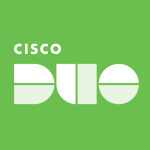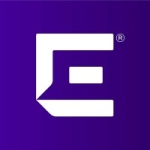What is our primary use case?
We use it for wired .1x, wireless authentication, VPN, and multi-factor authentication. We wanted to have a consistent experience for authentication and authorization of endpoints across the network, as well as security.
How has it helped my organization?
As a water utility organization, we're considered critical infrastructure by the feds. Everyone needs water. So it's important for us to protect our industrial control systems, our SCADA systems. ISE helps us do that by segmenting them off from the rest of the network.
And by eliminating trust, it helps us with audits, including CJIS because we have a law enforcement division, and trying to conform to the NIST standards. A lot of government agencies are becoming more familiar with the Zero Trust model and ISE makes our audits go a lot faster and a lot smoother than they used to.
What is most valuable?
The endpoint profiling feature is among the most valuable because it keeps me from having to manually maintain a MAC address bypass list to track endpoints. I can have ISE profile them for me and then put them in the right bucket.
In addition, ISE really adopts and is strong in the Zero Trust model where we consider everybody a foreign endpoint until they prove they belong on the network. ISE just seems to be built from the ground up to do that, whereas with other solutions, you have to "shoehorn" that in.
I also rate it pretty highly for securing access to our applications and network. If you have the good fortune of being a total Cisco shop, you can utilize SGTs, end to end, across the network. It can be a little tricky to get working, but once it does, it creates quite a consistent experience for any endpoint, even if it moves anywhere in the network.
What needs improvement?
I'd like to see the logging be a bit more robust in terms of what it has baked in. If I want to do any in-depth searching, I have to export all the logs to an external platform like Elastic or LogRhythm and then parse through them myself. It would be nice if I could find what I want, when I want it, on the platform itself.
For how long have I used the solution?
I've been using Cisco ISE (Identity Services Engine) for 10 years.
What do I think about the stability of the solution?
Now, the stability is pretty good. I've been working on it since the product launched and it was a bit sketchy. Its current state is really good right now.
The only thing we have run into was a bug when we ran virtual appliances, but that turned out to be an issue with our storage networking QoS policies. That wasn't really an ISE problem, it was more of a storage problem.
What do I think about the scalability of the solution?
In terms of supporting a distributed network, it's pretty powerful. You can stand it up and cluster it and it scales out pretty well. You can put nodes wherever you want to service authentication requests. We're able to scale up or out and we can choose how and when we do that with either virtual or physical machines, meaning it's very flexible.
It scales quite well. One of the things that Cisco is good at is keeping things pretty simple when you want to scale it. If you want to scale up, you get stronger admin and monitoring nodes. If you want to scale out, you get more policy service nodes. It's quite easy to stand them up, really anywhere, if you use virtuals.
We use it around our Fort Worth campus, which has about half a dozen buildings. By the end of the summer, we'll have it deployed to all of the rest of our five campuses. We have about 30 remote locations across 12 counties in North Texas and they're all using ISE. It works out pretty well.
We have it on-prem right now, but we are moving to a hybrid cloud platform on Azure for a lot of our applications, so we're starting to do proofs of concept with ISE in Azure.
How are customer service and support?
TAC is pretty good. I would definitely suggest getting their solution support, which provides higher maintenance. That way, when you do get someone, you get someone who knows what they're doing. If you get the higher level of support, you get some really smart people who can fix things pretty quickly.
How would you rate customer service and support?
Which solution did I use previously and why did I switch?
We used to use Aruba ClearPass. It was somewhat clunky to use and it didn't integrate well with third-party platforms. If you used Aruba, it worked great. If you didn't use Aruba, and were pointing things at ClearPass, it had some issues. We found that ISE typically handled things a little bit better. We could point anything at ISE and take care of it.
How was the initial setup?
The initial deployment was pretty straightforward. It's very simple to just turn the box on and plug into it. You go through a couple of settings and then you can log in to the GUI and pull in all the other nodes that you want.
After the gear came in, it took us about a day to deploy it. I started by implementing it at the local campus. That way, if I broke anything, I could just walk down the hall and not have to drive anywhere.
I stood up the first cluster, and then it was another engineer and me who worked on deploying it out to all the buildings. We started out in monitor mode, to see what it would do if we had turned it on. Once we had remediated anything that looked like it was authenticating incorrectly on the wired network, we went to closed mode and that's where we are now.
What was our ROI?
Return on investment falls in line with the business vision of securing our resources and protecting them against cyber attacks and nation-state attacks. It's hard to put a monetary value on clean water.
What's my experience with pricing, setup cost, and licensing?
Licensing is a disaster. It's a mess and I hope they fix it soon.
Which other solutions did I evaluate?
In addition to ClearPass, we looked at Forescout. At the time we looked at Forescout, it was more of an inline product and we weren't looking to add more infrastructure between parts of the network to try to do inline authentications. It seemed easier to do it on the switch ports and have them talk to ISE.
What other advice do I have?
It's a very strong platform, especially now that we're on version 3.1. It's definitely my go-to. I would recommend it over any other NAC platform.
It requires a lot of technical knowledge to actually get it off the ground and running. It's not quite as intuitive as it could be, but it's still a solid platform.
Which deployment model are you using for this solution?
On-premises
Disclosure: My company does not have a business relationship with this vendor other than being a customer.















